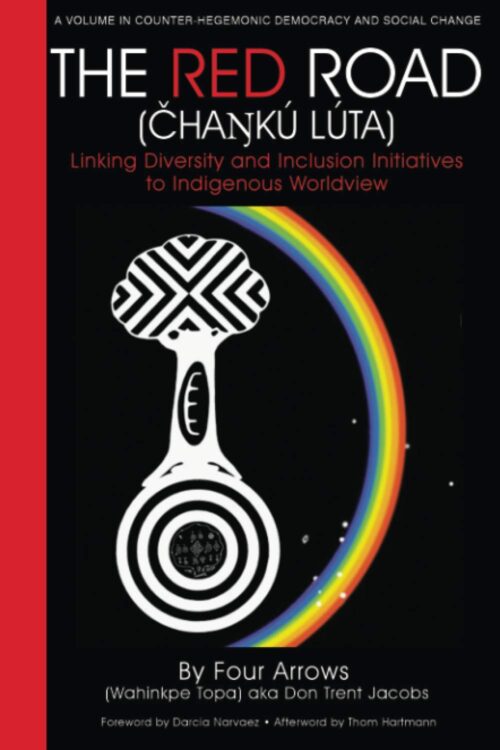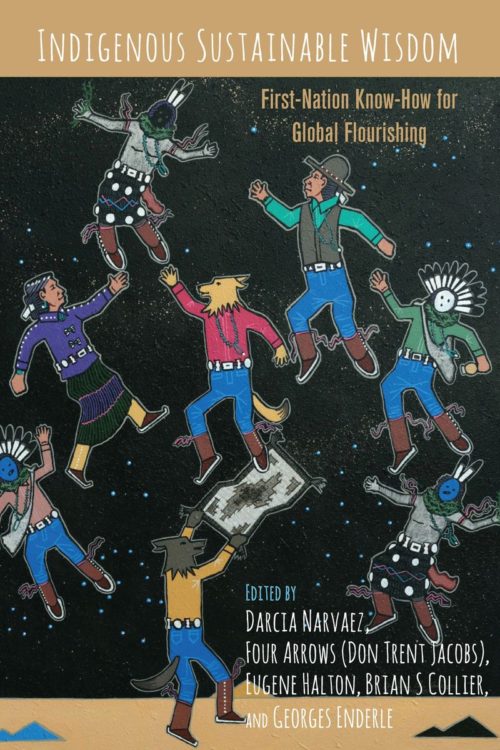Attenborough’s Film Is A Must Watch, But…
Editor’s note: Here is the Worldview Guide Four Arrows refers to in this post. He recommends you use it to understand the worldview of A Life on Our Planet.
Just now, I watched on Netflix the first showing of David Attenborough’s documentary, A Life on this Planet. I cherish this remarkable man and his history. At 93, he is staying on course with his advocacy for biodiversity. In the film trailer, they repeat something he says near the end of it: “If we act now, we can put it right.” In the film, he lists ways to make it right. Nothing new, mind you, but he always has a way to inspire. For example, he recommends more “No-Take-Zones” in the oceans. Of course, he was right on. Our world’s oceans have less than ½ of one percent in such zones. This is why six years ago, I raised money on Kickstarter to start the first “No Take Zone” on Mexico’s Pacific Coast. (Just Google “Four Arrows Marine Park”). I was inspired by Cabo Pulmo’s NTZ’s amazing success, that National Geographic called the “Baja Miracle.” Unfortunately, we are still under one percent today. And the Baja miracle is now being threatened.

I have always been a big fan of Attenborough. I loved his frank depiction of reality, his evident sincerity, and his clear solutions. However, his presentation convinced me all the more that our extinction is probable within a few generations. I think he agrees, but his words conveyed what I consider to be a false hope. He clearly said if we do not change immediately, we are doomed. However, at the same time he conveyed hopefulness. Moreover, he made no mention of the role our dominant worldview plays, entranced by fear, authority, greed, corruption, and anthropocentrism. There was no mention of religions and institutions that contain such colonial precepts.
I highly recommend everyone watch this important documentary, but to do so with the worldview chart here handy. Stop the film and ask yourself which ones have to change from the left side to the right side of the chart to make possible what he insists we do. Note when Attenborough’s language supports the dominant worldview and seems contrary to the Indigenous one – a worldview the United Nation’s Extinction Rate and Bio-Diversity Report says may be the only thing that can save us. For example, Attenborough says: “This is not about saving the planet, but saving ourselves.” And, “No doubt we are the smartest of all species”” It has to be about saving all life on earth and it must realize we are far from the smartest.
Without a decolonized, indigenized worldview that re-embraces the interrelated precepts in the chart below, we will likely continue with our anthropocentric, materialistic, selfish, competitive, patriarchal destruction.

I say “likely” because I do not know that we are doomed this time around. Many unknowns are possible, perhaps. But the evidence is not supportive. We must proceed doing what Attenburough is doing and walking with passion and caring the high road for all the right reasons, in spite of the probability we may not survive, and our children will inherit a horrible situation. Only when we can do the things being recommended without hope and with a fearless trust in the universe and a belief in the continuance of our Spirit, can we persist walking in balance. Perhaps it will take lifetimes.Of course, Attenburough and Netflix had to give hope. The frailty of too many people might prove calamitous if he said instead, “Even if we act now, it is most probably too late. However, we must be good ancestors.” We should not assume people are too frail.
The Lakota Medicine Man, Sitting Bull, had no illusions that his world was all but gone when he led his people as best he could. During the great tragedy surrounding him, he was more committed than ever to the truth, love, compassion, healing, complementarity, joy, art, nature, fearlessness, patience, and resistance. His concern was the “relative” well-being of his living people. I say “relative” because he knew an Indian would not thrive; they were about to enter. Such knowledge did not change the mandate to continue living according to our highest selves.
Margaret Wheatley describes such a perspective in a poem. She writes: “I am not interested in being hopeful or optimistic or working diligently to reverse the path of history… I am interested in being able to stay in the midst of this terrible tragedy that degrades the human Spirit or denies we have one.” To know that “there is a probable chance” that our world will suffer a sixth mass extinction and still do the work, has advantages over having improbable hope.


We are the answers we seek. We have the capacity to trade short term goals of maximizing profit for the few at the expense of the many fot long term sustainability and abundance for all. Pride and hubris cometh before a great fall. Human species ,,’dominion’ must be as caretakers for Mother Earth and compassionate custodians for one a other, starting with right where we live, one day at a time, one step at a time. Time and evolution are cyclical. Look to what we are now learning from the unearthing of the world’s oldest pyramids – Bosnian pyramids by Dr Semir Osmanagich. See youtube com/watch?v=0sEKQkZOcGc “With great power comes great responsibility. Blue and red kachinna watch as we weave our Destiny again in this cycle .